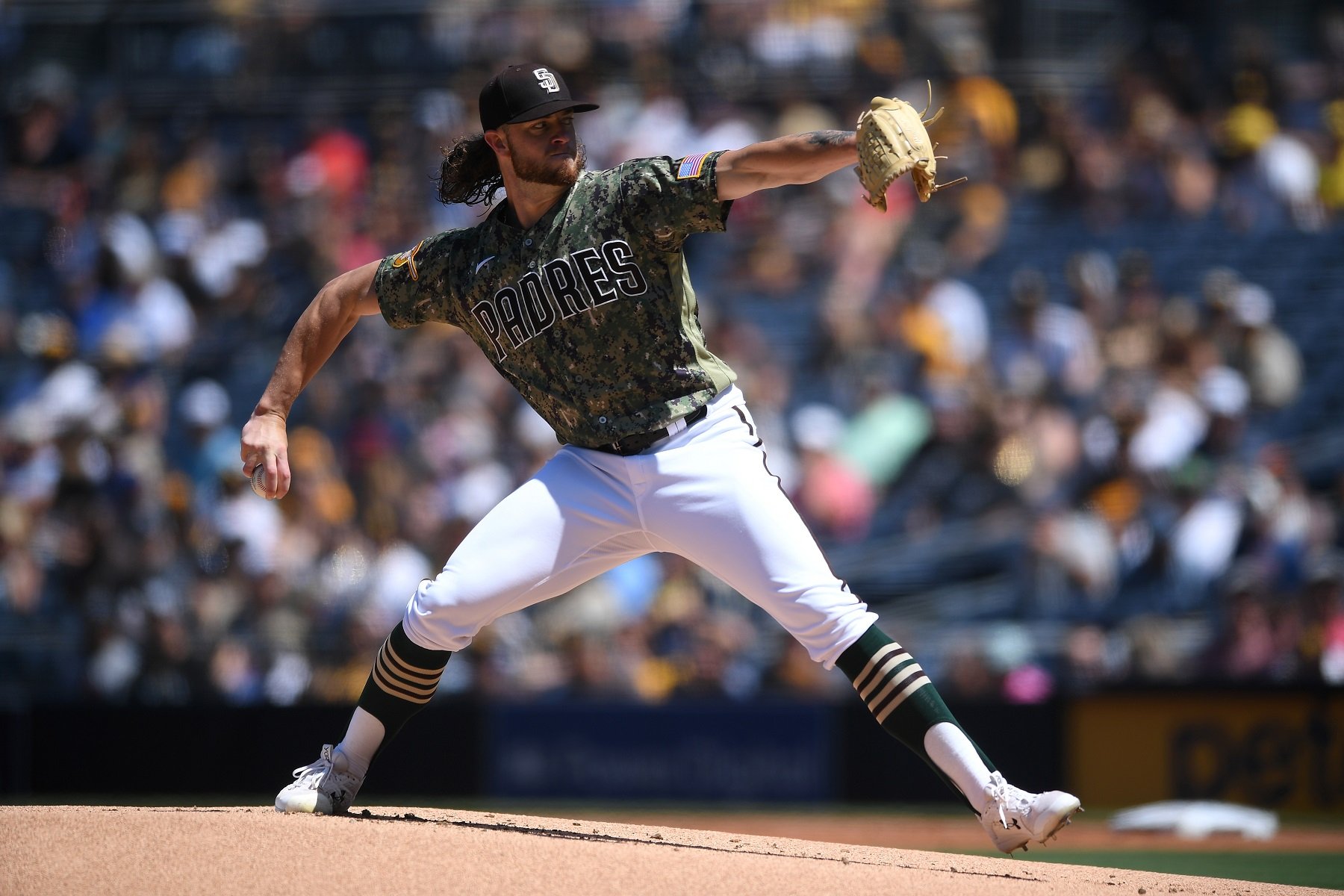
First and foremost, the first guy Minnesota gave up was a pillar in the clubhouse for the Twins. If there’s a way for this to go pear-shaped, it’s in disrupting chemistry we’ve heard talked about so highly coming into the season. Rogers was the Twins MLBPA player rep and worked with the owners through the lockout. He handled the media well and was extremely well-liked by his peers.
Through a baseball lens, Rogers is 31-years-old and coming off a finger injury that limited him to just 40 1/3 innings last season. He was sure to be traded at the deadline, but that came off the table when he hit the Injured List. Appearing in his first All-Star game, a neat experience in his home state of Colorado, Rogers posted a 3.35 ERA with a 13.2 K/9 and 1.8 BB/9. When healthy, he’s been among the best closers in baseball the past few seasons, and his 2.52 FIP tells the tale there.
Somewhat of a footnote in this deal, Rooker goes to the Padres after being beaten out by Kyle Garlick for the final outfield spot. He shined in seven games for Minnesota during 2020, but the .688 OPS last season simply wasn’t going to play. When he was drafted 35th overall back in 2017, it was immediately known he would be a bat-only player. San Diego will put him in a corner outfield spot, but he’s incredibly stretched there. Although the power certainly plays, there’s a lot of swing and miss in his game as well. A fresh start could prove beneficial for him.
Dealing Rogers the day before Minnesota takes the field may be risky, but the return absolutely justifies a move.
Chris Paddack comes to Minnesota as a former darling rookie. He posted a 3.33 ERA across 26 games for the Padres in 2019. He averages 94 mph on his fastball, and outside of 2020, he’s posted strong FIP numbers. The 5.07 ERA in 2021 wasn’t pretty, but the peripherals suggest there’s more to unlock. Although his strikeout numbers have fallen a bit the past three seasons, he’s also lowered his walk and home run rates. There’s swing-and-miss stuff to be exploited here, and pitching coach Wes Johnson will immediately get to work on pushing those tweaks.
Paddack is under team control through the 2024 season from a contractual standpoint. This alone may be the most significant boost for Minnesota. At just 26-years-old, the Twins can mold Paddack throughout the next three seasons and hope to push his stuff towards the top-end of their rotation. He would join Kenta Maeda, Joe Ryan, and Bailey Ober as arms already locked in for next season. Making just $2.25 million through arbitration this year, Paddack’s expense is minimal.
Joining Paddack and adding back into the Twins pen is Emilio Pagan, who will be with his fifth team in six big league seasons. Last year, his 63 1/3 innings with San Diego was nearly career-high, but it came with a career-worst 2.3 HR/9 and a 4.83 ERA. Pagan’s 5.22 FIP suggests he was actually worse than the surface numbers, but just two seasons ago, the Tampa Bay Rays had him looking like one of the best pen arms in the game. Under team control next season, Minnesota can opt to keep him around for another year.
The addition of Paddack obviously shuffles the rotation. As it was currently constructed, Ryan was set to be followed by Sonny Gray, Bailey Ober, Dylan Bundy, and Chris Archer. Paddack will need to slot in somewhere, and the most likely candidate to be bumped in my mind is Ober. He could go to a long relief role out of the bullpen until the point in which a starter begins to struggle. Bundy may be the lowest ceiling talent of the group, but given he was signed as a starter for $5 million early in the offseason, I’m not sure he’s the guy that would get moved around.
A ripple effect of this situation is what happens with Josh Winder. He looks to have made the big league roster but was already going to be pitching out of the bullpen in a long relief role. Now with Ober in that mix, too, there are a lot of innings needed to keep starting arms fresh, and the hope is that there’s only so many to go around.
Obviously, Pagan will slot in somewhere during the middle innings. He’s not a back-end option for Minnesota at this point. Replacing Rogers will be some combination of Tyler Duffey, Jorge Alcala, and Jhoan Duran. With Duran’s stuff playing so well this spring, it seemed sensible to use him immediately in relief rather than continuing to develop him as a starter. He now may be the frontrunner for the closer role if Rocco Baldelli and Johnson opt to keep Duffey and Alcala in their previously established late-inning spots. It would be a big ask for the young prospect, but the reality here is that Minnesota appears intent on developing their pen arms and not paying handsomely in relief. That’s certainly a viable strategy when you’ve seemingly made it work with a handful of guys.
When viewing this from the top, the Twins now pay less for three years of a starter with upside and a reliever who has been very good than they did for a closer coming off an injury and slated for free agency with a bat tossed in. It’s hard not to see this as a win for Minnesota, and while the volatility of relief arms remains immense, betting on the horses you have is definitely not a bad stance.
Time to play ball.
MORE FROM TWINS DAILY
— Latest Twins coverage from our writers
— Recent Twins discussion in our forums
— Follow Twins Daily via Twitter, Facebook or email
— Become a Twins Daily Caretaker
- VivaBomboRivera!, JDubs, nicksaviking and 7 others
-
 9
9
-
 1
1








Recommended Comments
Join the conversation
You can post now and register later. If you have an account, sign in now to post with your account.
Note: Your post will require moderator approval before it will be visible.